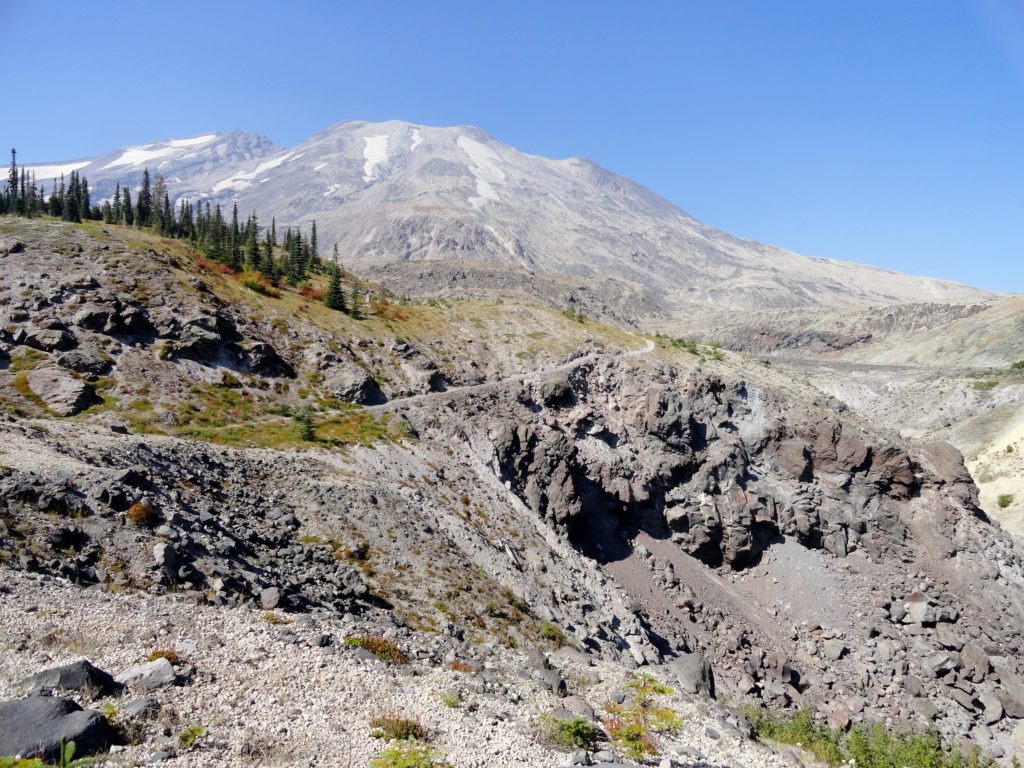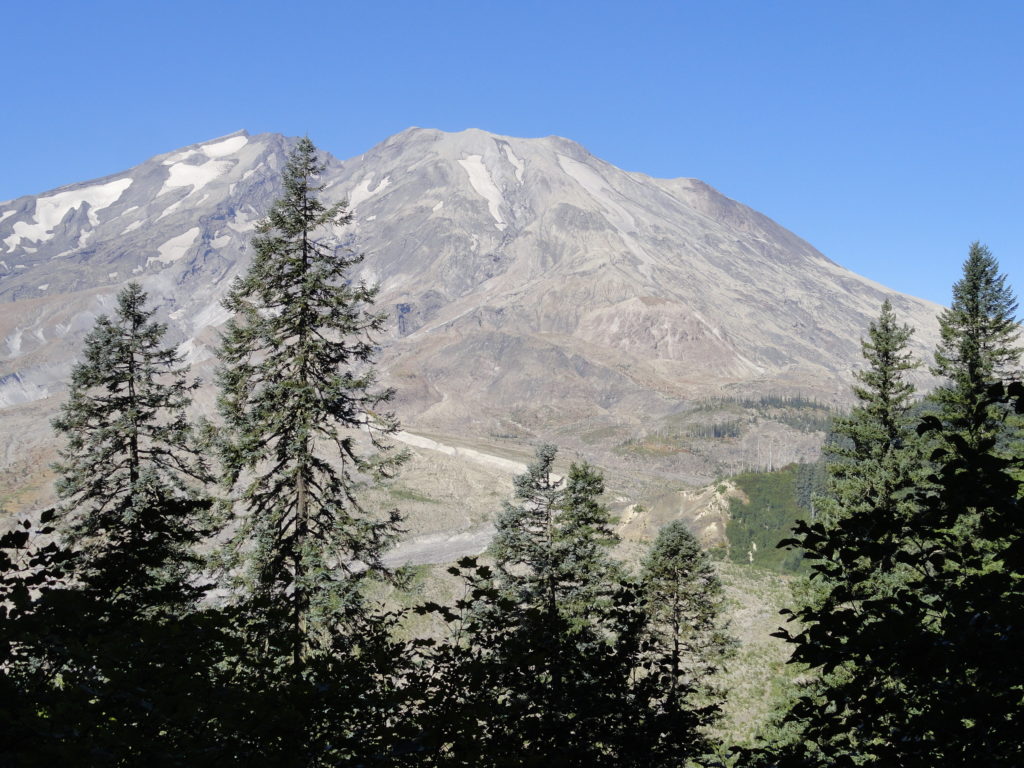Ape Canyon–Hike through old-growth forest above a swath of destruction

Quick Facts:
Location: Mount St. Helens National Volcanic Monument
Land Agency: National Forest Service
Roundtrip: 9.4 miles
Elevation Gain: 1,550 feet
Contact: Mount St. Helens National Volcanic Monument
Green Trails Map: Mount St Helens 332
Recommended Resource: Day Hiking Mount St Helens (Mountaineers Books)
Notes: Northwest Forest Pass or Interagency Pass required. Trail is also open to mountain bikes. Dog friendly. Practice Leave No Trace principles.
Access: From Portland or Seattle drive I-5 to Exit 21 in Woodland WA. Then continue SR 503 east for 29 miles to Cougar. Continue east on SR 503 (which becomes FR 90) for 7.0 miles turning left onto FR 83. Then follow this road for 11.3 miles to trailhead.
Good to Know: summer wildflowers, alpine views, old-growth forests, practice Leave No Trace Principles, Don’t be a surface pooper, Can the Tunes!
Hike along a forested ridge to the head of the tightly notched Ape Canyon. While the view down this narrow chasm is impressive—it pales in magnitude compared to the nearby Muddy River Lahar. Here during the 1980 eruption, a massive mudflow nearly a mile wide wiped out nearly everything in its path. However, the old-growth forests along the ridge sporting the Ape Canyon Trail survived. This trail is one of most fascinating in the national volcanic monument. It’s also one of the more popular ones—so try for a weekday.
The trail starts off fairly easy traversing patches of old growth interspersed with tracts of forest that were harvested pre-eruption. The trail is well-groomed and loved by mountain bikers. It’s one of their favorite routes in the monument. Keep dogs on leash and children alert.

The way follows along the edge of a huge lahar. Lahars are giant mudflows or debris flows created by a volcanic eruption. They consist of water, rocky debris, and a slurry of pyroclastic material. The origin of the word is Javanese. The island of Java in Indonesia is no stranger to volcanic eruptions. The Muddy River Lahar here was formed by the rapid melting of snow and ice on St Helens’ upper reaches and Shoestring Glacier during the 1980 eruption. A thick slurry of mud and debris rushed down the mountain scouring a path nearly one mile wide. Today the Muddy River channels through the gray rubble as colonizing plants slowly bring life back to the swath.
The trail passes several excellent viewing spots of the lahar, then begins to climb more earnestly. Utilizing switchbacks, it marches up the ridge through a gorgeous old growth forest of Douglas-fir, silver fir, noble fir and western hemlock. Enjoy window views of St Helens before reaching a good viewpoint of the volcano after about 3.0 miles.
The trail then descends through a tunnel of ancient trees to a small saddle, before resuming to climb. It then rolls up and down for a stint. The big trees yield to snags and downed wood as the trail transitions into a landscape altered by the 1980 eruption. Now on a narrower and more open ridge, enjoy excellent views north to Rainier, east to Adams, and of St Helens right before you.
The Ape Canyon too finally comes into view. After rounding a knoll housing seismic measuring equipment, the trail skirts the canyon’s rim coming to a junction with the Loowit Trail at 4.7 miles. Here at the scoured canyon’s upper reaches, the walls are a mere eight feet apart. It’s quite dramatic especially framing Mount Adams in the distance.
If you’re wondering about the apes; the only apes you’ll see are your fellow hikers. The canyon supposedly received its name back in 1924 after a group of apemen threw rocks at a miners’ cabin in the canyon. The apemen were actually young outdoorsmen who were probably unaware of the cabin. And of course all modern day apemen know never to throw rocks below from a trail.
If after reaching the canyon rim, you’re still itching for some more hiking, continue right on the Loowit Trail, You’ll pass a small waterfall in less than a mile. Beyond that, the spectacular and near level Plains of Abraham await

Ape Canyon is one of 95 featured hikes in my and Aaron Theisen’s Day Hiking Mount St Helens (Mountaineers Book). For more details on this hike and others (including winter trails, summit routes, and backpacking trips), pick up a copy of this book—the most comprehensive and trusted guidebook on hiking in the Mount St Helens area—today!
For information on where to stay and on other things to do near Mount St Helens, check out Northwest TripFinder